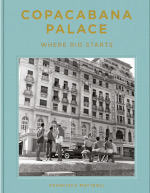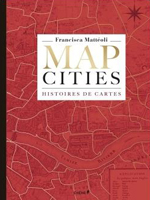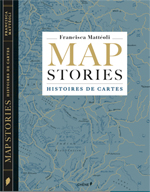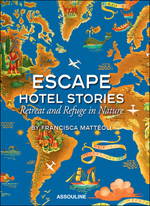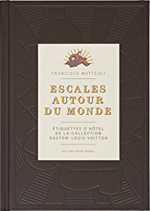Scroll down for the English version
A Rio, j’ai visité la merveilleuse maison de Roberto Burle Marx – paysagiste, peintre, sculpteur entre autre – qui a dessiné les célèbres vagues sur les trottoirs de Copacabana. Je voulais vous en parler car le lieu construit en 1949 sur une ancienne bananeraie est vraiment unique et montre bien à quel point ici la nature et l’architecture se mêlent pour donner des résultats magiques.
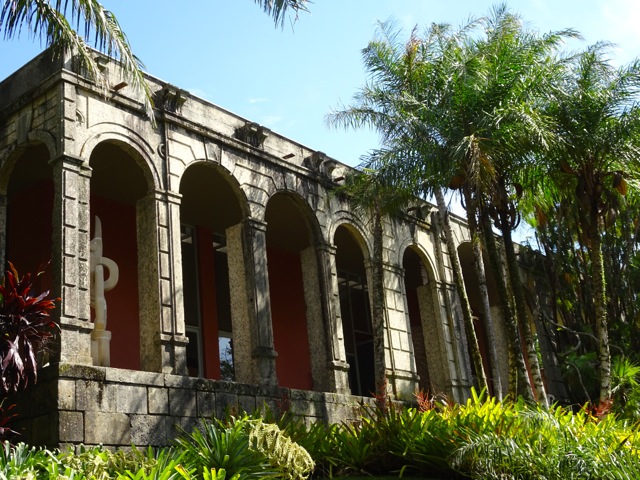
La maison ultra moderne dans sa conception intérieure est entourée d’une forêt tropicale fantastique qui compte d’innombrables plantes rares. C’est une joie de s’y promener et de découvrir les arbres inouïs, les fleurs étranges, les sculptures de l’artiste qui a travaillé avec Lucio Costa et Oscar Niemeyer. Son idée était de concevoir la nature tropicale comme un élément de la structure générale d’un lieu. Quand il a pensé aux trottoirs de Copacabana, il a trouvé des arbres pouvant résister à la brise marine – qui sont toujours là depuis 1970 – et a dessiné des mosaïques qui rappellent les vagues tout le long des 4 km de plages. Le résultat est absolument magnifique.
La veille, nous avions été nous promener dans le Jardin Botanique – datant lui de 1808 – un endroit que j’adore, où je vais à chaque fois que je suis à Rio. Encore cette fois, j’ai été émerveillée par la nature et les efforts de préservations. Il est rare de trouver un jardin botanique aussi bien entretenu et surtout, aussi incroyablement beau. Quand vous venez d’Europe et qu’il fait froid et gris, entrer dans un tel univers, si frais, si vert, si rempli de vie pure et de plantes extraordinaires est comme tomber d’un coup dans le jardin d’Alice aux pays des Merveilles. C’est une expérience unique.
La dernière fois que j’étais ici, nous avions été invités à une superbe soirée au Parque Lage mais n’avions pas pu bien voir l’endroit plongé dans la nuit. J’y suis retournée aussi cette fois, et j’ai compris pourquoi on a choisi de faire une fête ici. L’endroit aux pieds du Corcovado, tout près du Jardin Botanique, date des années 20 et était une résidence privée. C’est maintenant un parc divin, ouvert au public, qui cache un incroyable jardin hors des sentiers battus et des endroits pour touristes. Si vous pensez que Rio est seulement une ville, vous devez venir ici. Je ne connais pas meilleur endroit pour vivre une vraie expérience et découvrir l’élégance de Rio et sa beauté.
Quand des magazines me demandent ce que je rapporte de mes voyages, je cite toujours d’abord mes souvenirs, et si on me parle de Rio, un de ces endroits là, qui pour moi représentent le meilleur de la vie carioca. Je pense qu’aucun objet que vous rapporterez ne peut rivaliser avec des images que vous gardez au fond de vous. Si vous rentrez d’un voyage en étant changé – pour le mieux bien-sûr – si vous avez vu ou appris des choses qui vous ont marquées ou éblouies, alors vous rapportez vraiment quelque chose qui compte et restez pour toujours en contact avec l’endroit où vous avez voyagé.
PS : d’autres images de Rio sur Instagram…
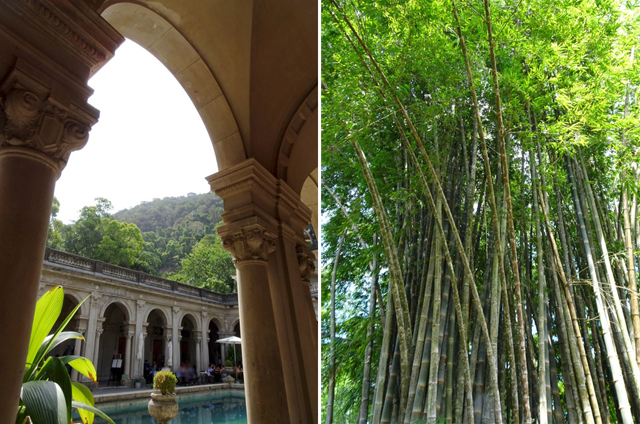
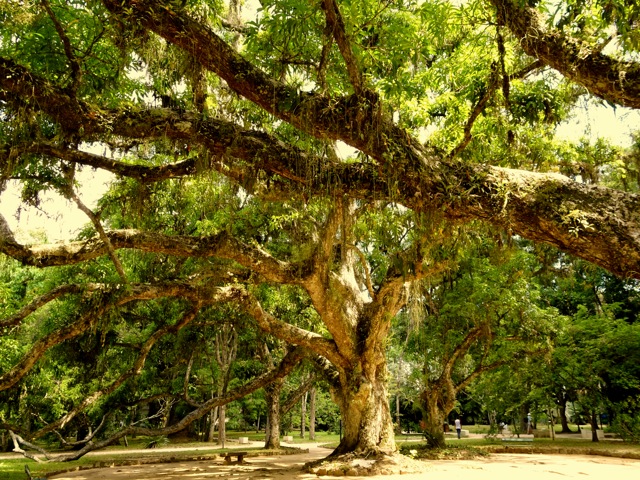
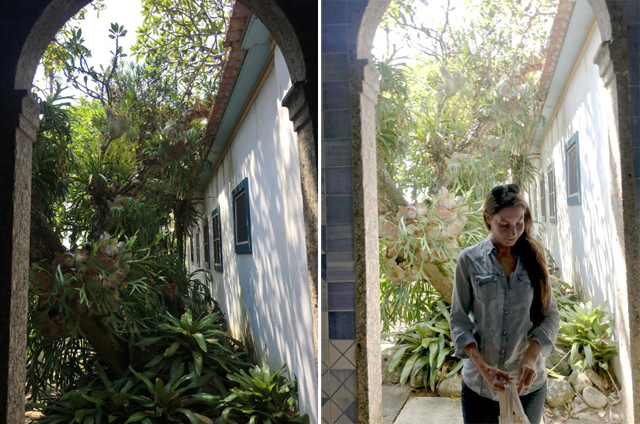
Rio de janeiro – Nature, inspiration & some more addresses
When I was in Rio I visited the wonderful property designed by the landscape architect Roberto Burle Marx, also an artist and painter – amongst other things. He also designed the famous wave mosaics on the Copacabana Beach Promenade. I wanted to tell you about this property, built in 1949 on the site of a banana plantation, because it really is truly unique. One can see just how much nature and architecture are intricately interwoven and the result is simply magic. The starkly modern house (when you walk though the door) is surrounded by the most amazing tropical rainforest with countless rare plants.It really is a pleasure to walk around there, discovering incredible trees and extraordinary flora with sculptures by the artist who worked with Lucio Costa and Oscar Niemeyer. Burle Marx’s concept was to include the native tropical vegetation as an important structural element of his landscape design. For the Copacabana Beach promenade he found native sea breeze resistant trees, that were planted in 1970 and are still there today) and designed stone mosaics resembling waves and these cover the entire two and a half-mile stretch along the beach. The result is simply magnificent.
The previous evening before we went for a walk in the Botanical Garden (dating from 1808). I really love this place and I always go there whenever I’m in Rio. Once again, I was bowled over by the amazing native vegetation and all that had been done by conservationists to look after it. It is quite rare to find a botanical garden that is so well looked after but also so incredibly beautiful. Coming to such a beautiful place, so fresh, so green, so teeming with life, with the most fabulous flora – when you’ve just arrived from Europe with cold weather and grey skies – one feels a bit like Alice in Wonderland when she fell into the garden. A really unique experience.
During my last trip here, we were invited to a fantastic party at Parque Lage but as the place had been plunged into darkness, we couldn’t see much of the surrounding area. But when I returned during the day, I immediately understood why it had been selected for the occasion. At the foot of the Corcovado Mountain next to the Botanical Gardens, it was a private residence in the 1920’s. Today it is the most heavenly park, open to the public, containing an incredible garden, far from the beaten track and tourist sites. If you only think of Rio as just a big city, then you simply must come here. I cannot think of a better place in which to experience something quite extraordinary, to discover Rio’s elegance and beauty.
Whenever magazines ask me what I bring back from my travels, I always talk about memories first and among my favorite memories of Rio, I always mention one of these places. For me, they represent the best of the carioca way of life. I don’t think that there is anything you could possibly bring back with you that could rival the pictures you will forever keep in your hearts. If you come home changed after a journey – for the better of course – if you have seen things that have left their mark – or that stunned you, if you have learnt something, then you really will be coming back with something important, something of value, to treasure for ever more and you will always remain in contact with the place you went to.
PS : more pictures of Rio on Instagram…




